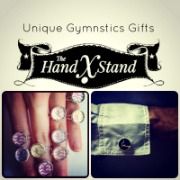As promised, a bit more from the Sharing Session. This one is thanks to a couple of co-workers who attended a Trampoline Course with Jack Kelly an International Performance Coach. They passed down a document titled, Twenty Six Essential Principles for the Development of World Class Performance in Trampoline Gymnastics written by Jack Kelly.
From the very beginning, we must become diligent in emphasizing the importance of seeing key points in the movement and focal points on a apparatus. When a specific action needs to take place, like a twist, or for the beginning phases for a landing (leg extension) is a skill that is learned. We as coaches should always question what a gymnast sees. We might be surprised when the gymnast responds that they have their eyes closed.
I found this information so useful for me as I experienced this exact response! When I questioned one of my gymnasts learning fly-a-ways in
to the pit recently she replied, “I have them closed because I don’t want to
get pit fuzz in my eyes.” After a giggle, I explained to her she can have them
open through the whole skill, look for her landing and then close them as she
sinks into that fluffy, fun yet disgusting thing we call the pit. (I’ll have to research the best ways to
clean one, if anyone has any ideas please comment!)
With this particular gymnast having great body tension and
form coupled with a fantastic release, it makes her layout a floating joy to
watch. Yet, she feels uncomfortable with her movements. I found it is very
dangerous of me to assume that just because she has all these great aspects
that she actually can see and feel what she is doing. I’m very hesitant to push
her to do the skill on her own until I am 100% sure she knows.
With all gymnasts like her, vision needs to be used with all
other senses to complete her awareness. Great gymnasts have an innate ability
to sense their body position and orient themselves in the air. If they rely on this alone, they lose
their confidence to perform even the most familiar skill, particularly if the
move suddenly feels different when a gymnast is growing. This can effect the
feelings of a skill taking it away form the norm. This horribly named “lost
skill phenomenon” can be avoided and even cured by ensuring vision and hearing
are used to supplement kinesthetic feel. Damage to self-esteem & confidence
is very complex, let’s prevent this from ever happening!








No comments:
Post a Comment